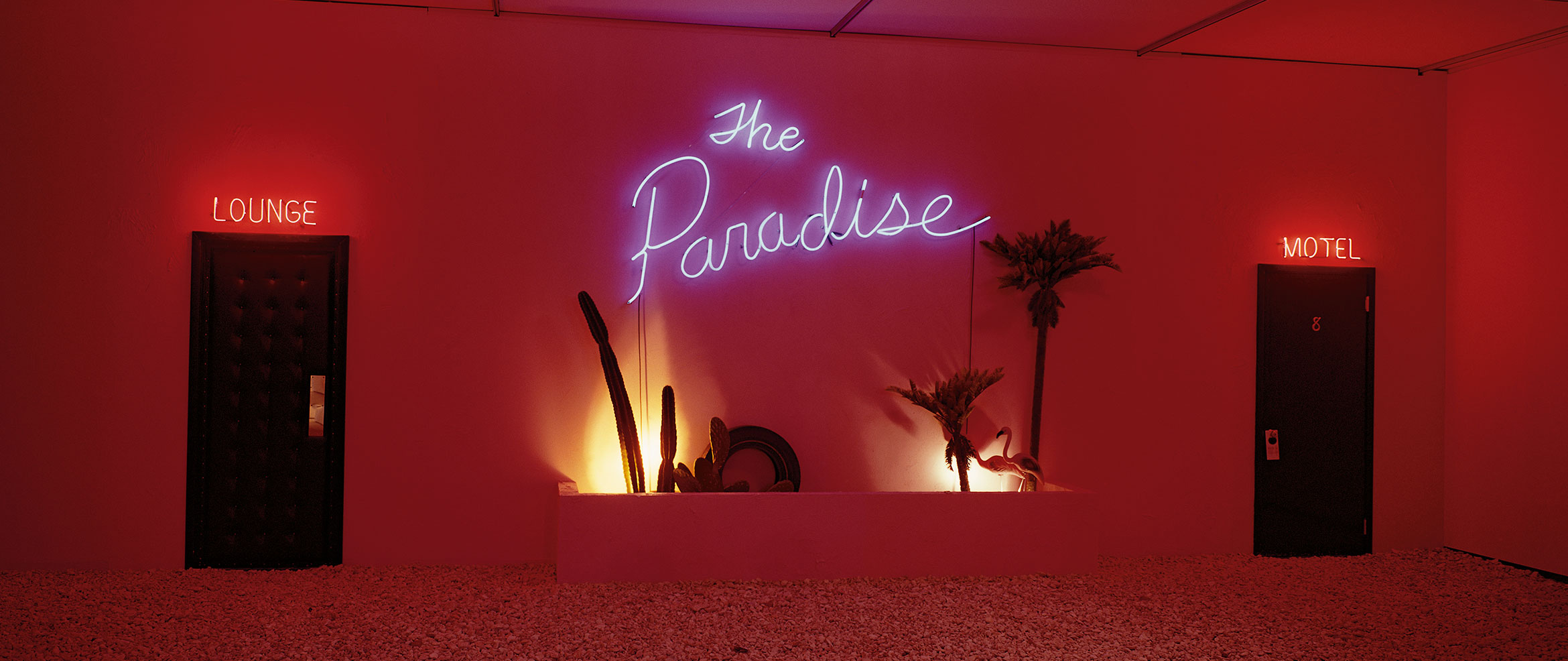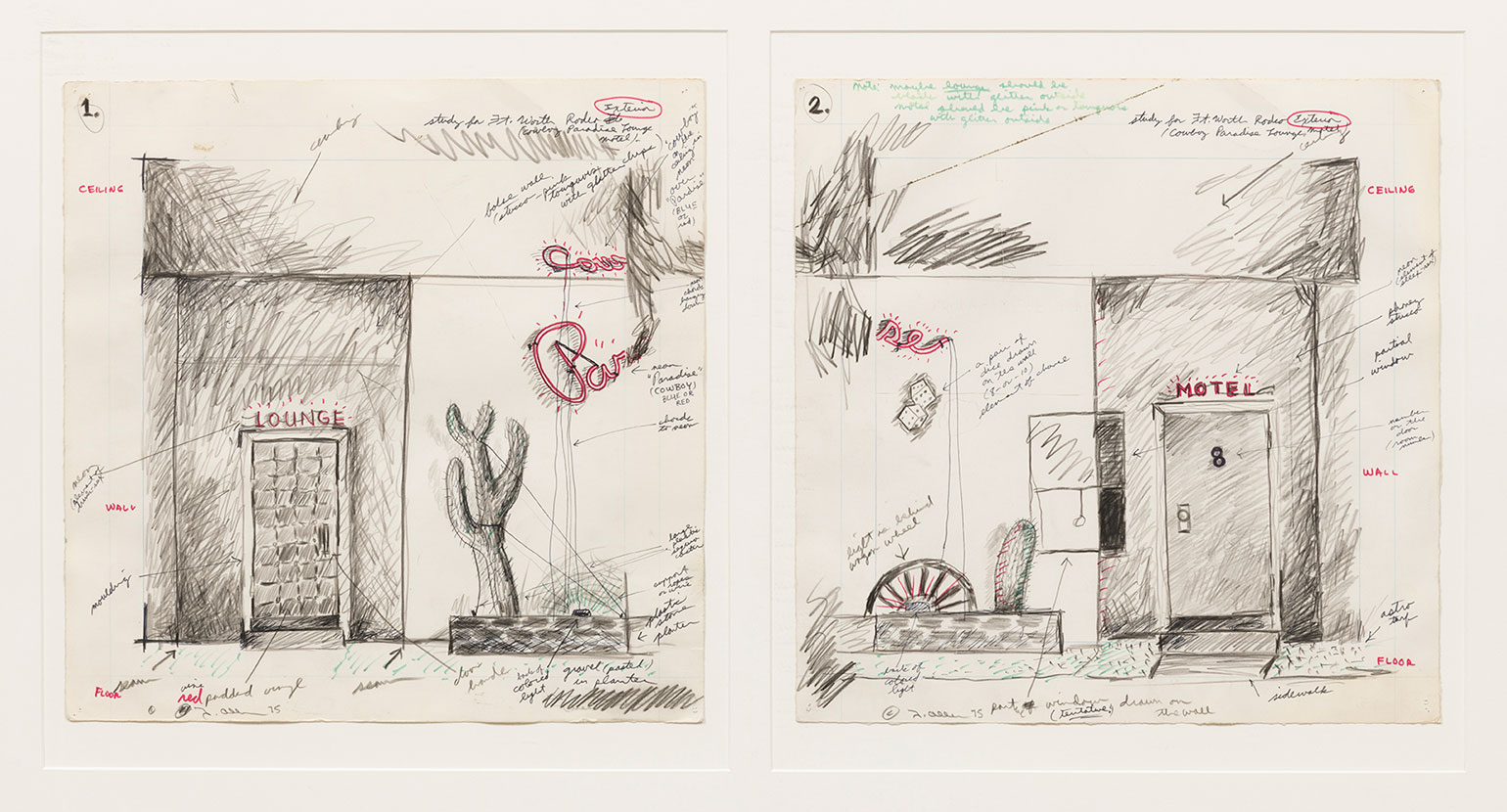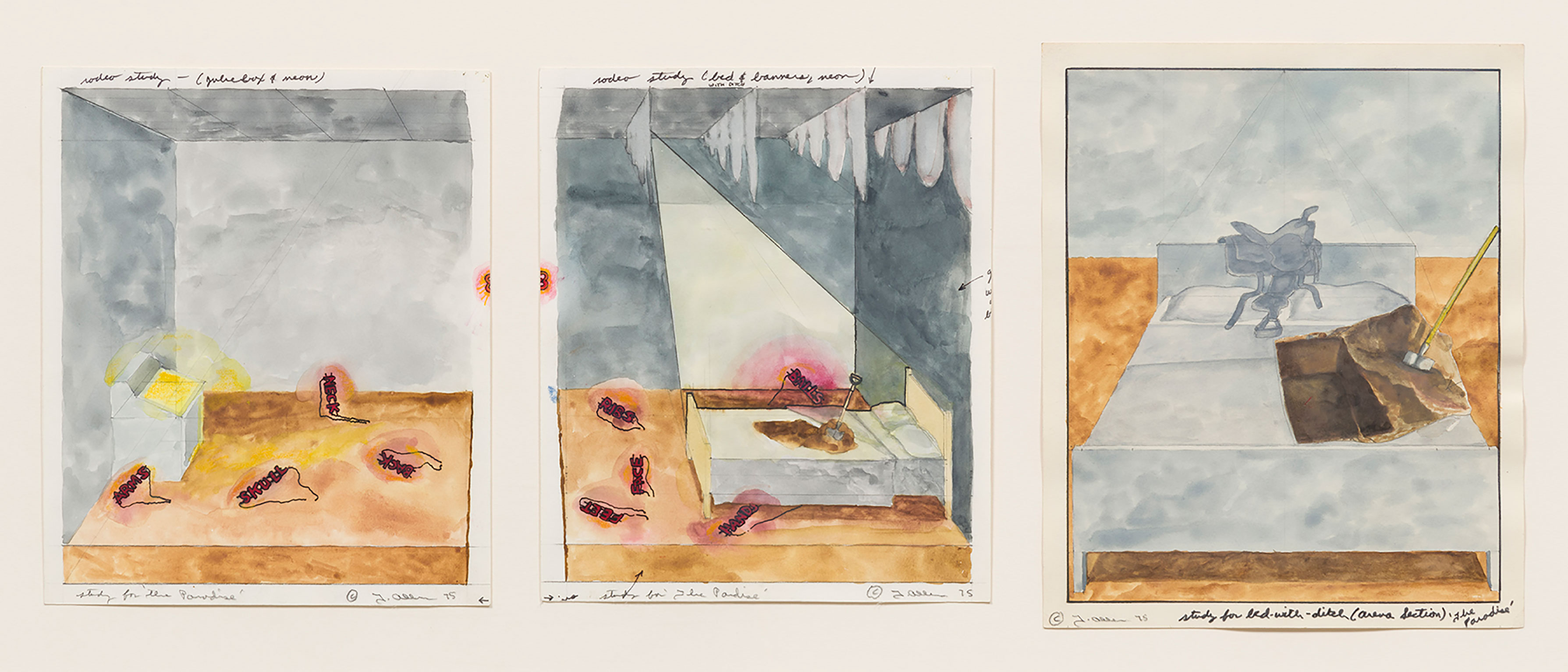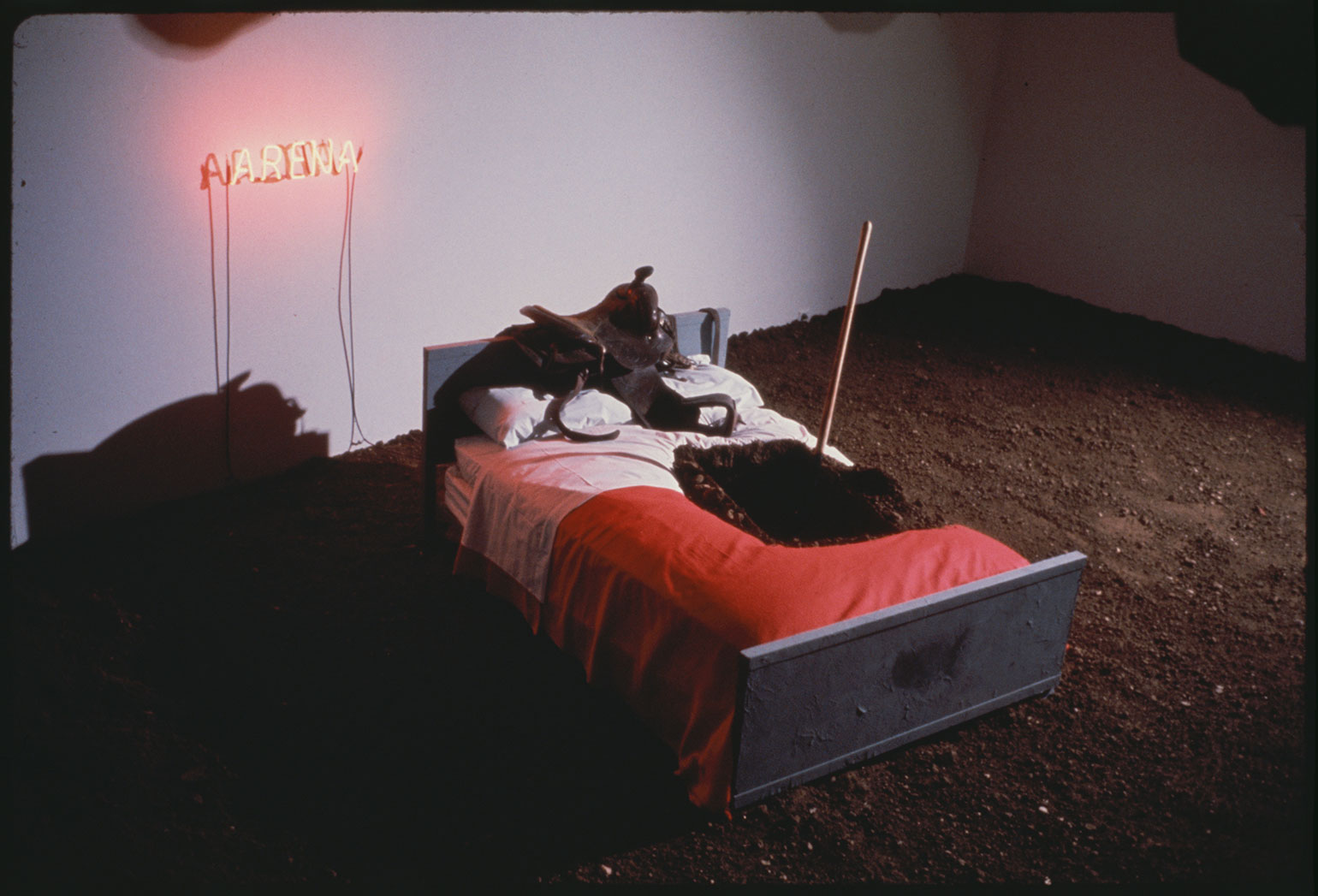
4
THE PARADISE (1976)
THE PARADISE (1976)
These studies were made for The Paradise (1976), Allen’s first large-scale installation constructed for The Great American Rodeo Show, Modern Art Museum of Fort Worth, Texas, 1976.

Study for Facade (The Paradise), 1975
mixed media on paper
25 ½ x 39 ¾ in. (64.8 x 101 cm)

Juke Box, Bed, Dresser (The Paradise), 1975
mixed media on paper
23 ¼ x 40 in. (59.1 x 101.6 cm)

The Paradise, 1976 as shown in the The Great American Rodeo Show, Modern Art Museum of Fort Worth, Texas, 1976
The Paradise, 1976 as shown in the The Great American Rodeo Show, Modern Art Museum of Fort Worth, Texas, 1976
“Eleven artists were invited by the Modern Art Museum of Fort Worth in 1975 to investigate the Fort Worth Rodeo. The artists were all given open access behind the scenes: the rodeo grounds, cowboy quarters, areas behind the chutes, the rodeo parade, etc., for the week of the spectacle. (In Forth Worth the rodeo is treated basically like an act of God.) When the week was over, the artists selected spaces in the museum to make works to be exhibited the following year in conjunction with the 1976 (U.S. Bicentennial) rodeo.
"The piece I made for the exhibition was based on the three basic places where rodeo cowboys live their lives: honky-tonk lounges, motel rooms, and rodeo arenas. The LOUNGE consisted of a jukebox (DESPERARTE ROOMS) programmed with cheatin’, lyin’ and dyin’ songs (pretty much the entire gamut of country music); the MOTEL was a dresser covered with masculine debris strewn around a television (video monitor) that played a video I made called 'Snuff Queen.'
“Eleven artists were invited by the Modern Art Museum of Fort Worth in 1975 to investigate the Fort Worth Rodeo. The artists were all given open access behind the scenes: the rodeo grounds, cowboy quarters, areas behind the chutes, the rodeo parade, etc., for the week of the spectacle. (In Forth Worth the rodeo is treated basically like an act of God.) When the week was over, the artists selected spaces in the museum to make works to be exhibited the following year in conjunction with the 1976 (U.S. Bicentennial) rodeo.
"The piece I made for the exhibition was based on the three basic places where rodeo cowboys live their lives: honky-tonk lounges, motel rooms, and rodeo arenas. The LOUNGE consisted of a jukebox (DESPERARTE ROOMS) programmed with cheatin’, lyin’ and dyin’ songs (pretty much the entire gamut of country music); the MOTEL was a dresser covered with masculine debris strewn around a television (video monitor) that played a video I made called 'Snuff Queen.'
"It featured Jo Harvey Allen as a 'high-haired honky-tonk woman' making up her face at her vanity in a motel she shared with a giant palomino stallion. The ARENA section was behind a tall white fence and featured a large expanse of dirt with a bed that had a 'grave' dug in it with a shovel sticking out. The outside façade was pink and made to resemble a honky-tonk exterior with neons, a desert planter box, and an oyster-shell parking lot.”
– Terry Allen
"It featured Jo Harvey Allen as a 'high-haired honky-tonk woman' making up her face at her vanity in a motel she shared with a giant palomino stallion. The ARENA section was behind a tall white fence and featured a large expanse of dirt with a bed that had a 'grave' dug in it with a shovel sticking out. The outside façade was pink and made to resemble a honky-tonk exterior with neons, a desert planter box, and an oyster-shell parking lot.”
– Terry Allen

The Paradise, 1976 as shown in the The Great American Rodeo Show, Modern Art Museum of Fort Worth, Texas, 1976
From 1967-71, Jo Harvey and Terry Allen aired a radio show every Sunday on the Los Angeles underground station KPPC-AM-FM. Broadcast from the basement of the Pasadena Presbyterian Church (PPC), Terry produced and programmed, while Jo Harvey hosted as storyteller and on-air personality. She was the first female country music DJ in the United States.
Each show ran on a theme, and the episode Honk-Tonks is featured here. Only a few recordings survived, and those still in existence reside in The Allen Collection, The University Archives, Texas Tech University.
Honk-Tonks episode
Rawhide and Roses (radio show), 1967–71





